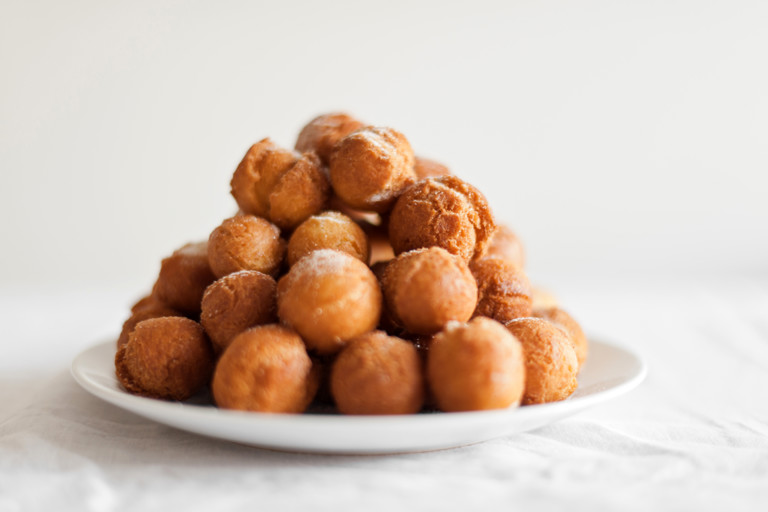Venetian favette (castagnole)
Valeria's favette recipe (also known as castagnole) are one of the host of fried snacks served up throughout Carnival season, but are surprisingly simple to whip up at home. If you're heading to Venice carnival this year, check out Valeria's guide to Venice's best pastry shops so you can stock up on snacks while you're there.
Carnival is a time of year that still bares quite some relevance in the Italian calendar. Running from the end of Christmas time to Ash Wednesday (which marks the beginning of Lent in the Christian calendar) it is still considered to be the period in which all transgressions are allowed, most especially in the culinary realm.
As a celebratory festivity, Carnival can be traced back to the Roman empire. However, it is in Venice that it found fertile soil, flourishing within the water walls of the Serenissima, and eventually gaining worldwide fame. It is no mystery that 18th century Venice was known for its decadent, lustful costumes. These were only amplified during Carnival, as masquerades and secret parties would take place all over the city.
The same spirit of excess is reflected in what is considered to be Venice’s traditional Carnival foods. Not unlike the rest of Italy, typical treats for carnevale are often fried and sweet. Among the most famous are frittelle (doughnuts); crostoli or galani (paper-thin layers of dough, deep-fried and dusted in sugar) and favette.
Favette (also known as castagnole – little chestnuts – in other Italian regions) are perhaps the least known of the Venetian Carnival classics, but they are by no means less exciting. Small in size, they have a soft, cake-like texture and a lovely aromatic flavour that makes them extremely moreish. And although they can be easily found in bakeries and pastry shops (either plain or stuffed with custard), in my family, we always made favette at home – it’s traditional.
This is the recipe we have been using for as long as I can remember, as simple and moreish as it gets. The only difference is, nonna used to fry them in lard – and you can, too, if you wish to get a taste of the old days.
Ingredients
Metric
Imperial
Favette (castagnole)
- 200g of plain flour, sifted
- 60g of caster sugar, plus more for rolling
- 1 tbsp of baking powder
- 1 pinch of sea salt
- 1 unwaxed lemon, zested
- 2 eggs, medium
- 40g of unsalted butter, at room temperature, diced
- 1 tbsp of anise liqueur
- 1 tsp vanilla extract
- 1l sunflower oil, for frying
Method
Get in touch
Please sign in or register to send a comment to Great British Chefs.


